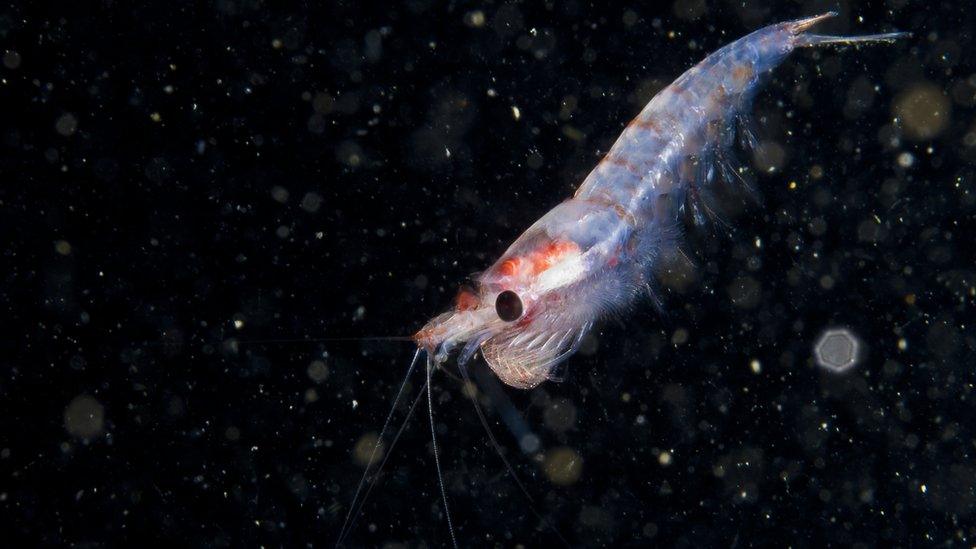Climate change: Antarctic krill is moving southwards
- Published
- comments

Antarctic krill - the favourite food of many whales, penguins, fish and seals - is moving south, according to new research.
It has done this because of a recent period of warming at the northern edge of the Southern Ocean, where it likes to live.
This is a problem as the shrimp-like animals are an extremely important source of food for lots of sea life.
They also play a significant role in moving carbon from the air down into the depths of the ocean, so it has a knock-on effect on other aspects of the ocean's ecosystem.
The research published in Nature Climate Change found that the centre of krill distribution has shifted towards the Antarctic continent by about 440 km over the last 40 years.
This shift has meant that the krill is not keeping up its population numbers, so not only is there less krill, but it is in fact older (and therefore bigger).
Dr Simeon Hill, one of the joint leaders of the study, explains: "These northern waters have warmed and conditions throughout the Scotia Sea have become more hostile, with stronger winds, warmer weather and less ice. This is bad news for young krill."
He added that it was important for everyone to make efforts to reverse climate change to stop these changes from happening.
"These changes appear to be driven by the global climate. Continued precautionary management of the krill fishery is important, but is no substitute for global action on climate change."
- Published27 March 2018
- Published5 September 2017
- Published28 September 2018
